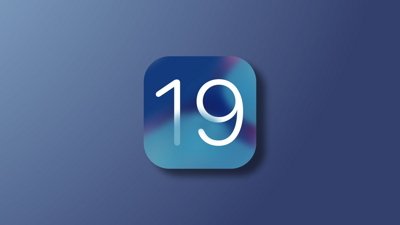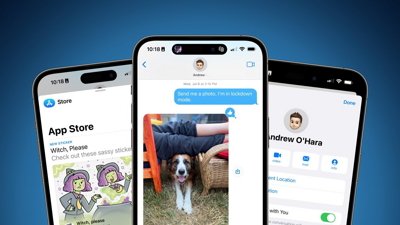Introduced in 2007 for the iPhone, iOS is the highly used and well-known operating system for Apple's mobile devices. The software is also used to power the iPod Touch. It powered the iPad as well until the introduction of iPadOS.
Apple co-founder and former CEO Steve Jobs initially envisioned the operating system as “iPhone runs OS X” in its January 2007 unveiling. It was thought that leveraging the Mac's operating system for iPhone OS would enable developers to create apps relatively easily, without needing to relearn a new programming language or significantly changing their development practices.
Though it initially only ran applications produced by Apple, the launch of a software development kit in March 2008 was followed by the launch of the App Store in July 2008. The ability to develop apps and sell them through the App Store created the modern-day app economy, with billions of dollars being paid to developers each month from sales of apps in the digital marketplace, as well as in-app purchases.
Name Changes
When the iPhone first became available, the operating system was known as “iPhone OS,” following the naming convention of Mac OS X. By 2010, Apple had rebranded the operating system to use the name "iOS."
Apple had to license the iOS name, as Cisco owned the trademark for its own network infrastructure software. This echoes a similar pattern between the two companies for the iPhone name, which was also trademarked by Cisco, though, at that time, Cisco had sued over alleged infringement and prompted a settlement from Apple.
iOS Releases
As Apple continues to develop iOS and iPadOS, the company adds more features and functionality to the software over time. The majority of new features are introduced with the main milestone releases, though Apple does deploy some changes throughout the year in version updates.
iOS 19
Apple is expected to reveal iOS 19 during WWDC 2025 on June 9. It will have a focus on improving and expanding Apple Intelligence features.
Siri could get a significant update that makes its backend based on a large language model (LLM) rather than machine learning. That update may not go live until iOS 19.4 in early 2026.
Customization and personalization are likely to continue being a priority for iOS releases. Tying more system controls to Focus Modes and customization features are likely.
Leaks and rumors point to a significant visual redesign across Apple's operating systems that will bring them closer to visionOS. Initial mockups show glassy elements over buttons and app icons that reflect light at the edges.
iOS 18
Apple revealed iOS 18 during WWDC 2024 with more customization options and social focused features, but the star of the show was Apple Intelligence, Apple's AI initiative.
The Home Screen gets more customization options with dark mode icons and the option of empty space. Both were things users were doing on their own with workarounds, but now they are part of the system customization.
Many small updates were included, like a new Passwords app, a custom Control Center, changeable shortcut buttons on the Lock Screen, and RCS support. The iPhone 15 Pro supports Apple Intelligence and the entire iPhone 16 lineup is expected to support it too.
iOS 17
For the fourth release in a row, Apple has emphasized social interactions and device customization. In iOS 17, widgets can now be interacted with on the Home Screen, and changes across all of Apple's social apps emphasize ease of use and whimsy.
Contact Posters take over the incoming call screen and can be shared with mutual contacts automatically. Meeting new people and getting their info is also easier thanks to NameDrop, which enables a quick share of Contact Poster, number, and other pre-approved info with a tap.
Apple's Journal app was also revealed, which will bring in data from various apps and system resources for a complete view of the user's day. It prompts the user to write about their day and create personalized entries.
This was a jam-packed release for features and quality-of-life improvements. For example, autocorrect is now powered by a transformer language model.
Each new update has introduced features announced at WWDC, like iOS 17.1 brought the new Favorites feature to Apple Music, iOS 17.2 added the Journal app, and iOS 17.3 introduced Stolen Device Protection.
After EU regulations forced Apple to open up its platforms, some other changes were made that affected the global user base. One surprise change was the allowance of emulators on iOS for the first time.
iOS 16
Customization was yet again the emphasis thanks to the new Lock Screen in iOS 16. Apple took the new social and device management features shown off a year prior and enhanced them further, tying them to more system-wide controls.
Users can design a custom Lock Screen with widgets, assign that Lock Screen to a Focus Mode, and specify which Home Screen is tied to that Lock Screen and Focus Mode for even greater customization options. To take it further, Apple also lets users tie Focus Modes to watch faces shown on their Apple Watch, or enables Focus Filters to show only specific content within apps.
Apple also brought SharePlay to iMessage chats, which means users can start a SharePlay session without needing an active FaceTime call. Additional features include new collaboration tools across the iWork suite and Safari.
Also, developers get a new notification tool called "Live Activities" for showing live updates like delivery options, now playing status, and more. These tie in directly with the Dynamic Island found on the iPhone 14 Pro.
iOS 15
The ongoing pandemic was the unsaid inspiration for Apple's iOS 15 release. Social features like improvements to FaceTime, iMessage, and the newly introduced SharePlay showed Apple was aware that people were still unable to see loved ones in person.
New privacy controls and personal mindfulness took the stage as well. Hide My Email, Private Relay, and other small additions made iOS more private and secure for users. Focus Modes replaced the blanket Do Not Disturb mode and gave users more control over who could interrupt them and when.
Machine learning tools were also a big focus of the new operating system update. Text was now selectable in photos across the system, and any photo taken with text is now indexed in Spotlight search.
Another small update was called "Shared With You." A system that shows you relevant links sent to you in iMessage across the relevant apps. For example, the Apple News app will show what links were shared and who they were from in a dedicated UI location.
iOS 14
Apple announced iOS 14 at the company's first all-digital WWDC in June 2020. Despite the ongoing problems with the coronavirus and lockdown, Apple managed to put out quite a few new features for its platforms. iOS 14 released on September 16.
App Library and Widgets change the entire Home screen experience from top to bottom. Now apps live in the App Library and can be removed from the Home screen without deleting them. Widgets have been freed from the Today View and can be placed anywhere on the app grid.
App Clips are small pieces of an app surfaced by an NFC sticker, QR code, or interaction within an app or browser. They appear as cards on the display and contain less than 10MB of data for quick download and interaction. Users can then Sign in with Apple and Apple Pay to quickly complete a transaction without ever downloading an app. It's targeted primarily for uses like scooter or bike rentals, where you need to make a quick transaction on the go.
On-device machine learning saw big improvements in iOS 14 as well. Dictation is now handled entirely on the device and has much better accuracy. A new Translate app handles live translation of a discussion in different languages, all offline as well.
iOS 14.1 shipped alongside the iPhone 12 and iPhone 12 Pro. The update added support for the new smartphones along with 10-bit HDR video playback and edit in Photos for iPhone 8 and later.
Apple released iOS 14.2 on November 5, adding a dedicated Shazam button and over 100 new emoji. The new emoji include more inclusive options, food, and objects. The update also included eight new wallpapers, including outdoor scenes and artistic pieces.
iOS 14.3, released in December, adds support for ProRAW. The new photography mode combines for the first time Apple's computational photography with shooting in RAW. Previously, iPhone photographers had to choose between the two modes. The update also adds a new alert to help users update connected HomeKit accessories, rather than manually updating through the manufacturers' apps.
iPadOS Departure
The iPad launched with iPhone OS and then later iOS, with the two operating systems having relative feature parity due to the similarity of the two device classes. Over time, Apple introduced changes to iOS that added features just for iPads, including a hefty focus on multitasking functionality.
With the launch of iPadOS 13.1 in 2019, Apple made the difference in the operating systems more distinct by rebranding the iPad-specific version of iOS. Even after the changeover, the two operating systems still share a vast majority of their codebases and features, though with iPadOS gaining elements that allow it to take advantage of the larger display.
These features include Split View and Slide Over, multitasking features that display more than one app on the screen at once. iPadOS also offers picture-in-picture mode, Scribble for Apple Pencil, and other multitasking elements. Later, changes including Sidecar and external storage support helped make the iPad more conducive to work and productivity and differentiated from iOS.
iOS 13
Released in September 2019, iOS 13 introduced quite a few new features, including a Dark Mode that can shift between light and dark themes. The QuickPath Keyboard, similar to Swype and other trace keyboards, allows users to drag their finger across the virtual keys to type words.
New iCloud storage support in HomeKit enables recordings from select cameras to be stored on Apple's cloud storage service instead of a manufacturer's servers. Video is encrypted locally before being uploaded to the storage.
CarPlay gained an overhaul, including a new dashboard view, an updated Apple Music app, and a new Calendar app. It also no longer minimizes a view when the user switches apps on the host iPhone.
For iPad users, a new Home screen view uses smaller icons, a new Today View can be locked to the Home screen, and external storage support allows work to be performed on external drives.
13.1 was unusual as its release date was announced before iOS 13 shipped, and fixed a number of bugs in the original release. Along with officially moving iPads over to iPadOS, the release also added an ETA to Maps, extensive fonts support, and Shortcuts Automations.
13.2 added Deep Fusion computational photography for the iPhone 11 lineup, an opt-in option for Siri request testing, over 70 new emoji, HomeKit Secure Video, and a number of bug fixes and improvements.
13.3 added Communication Limits to Screen Time, new layouts for Apple News+ stories, refinements for news stories in the Stocks app, Safari support for FIDO2 keys, extended mouse support including hot corners, and a selection of minor changes.
13.4 added full mouse and trackpad support intended for its Magic Keyboard accessory for the iPad Pro update, as well as iCloud folder sharing, new Memoji stickers, and Mail toolbar. The release also made it possible for developers to combine macOS and iOS app purchases together.
iOS 12
Apple released iOS 12 on September 17, 2018, five days after its announcements of the iPhone XS, iPhone XS Max, and iPhone XR.
The initial milestone release added some new augmented reality functionality, including support for a new USDZ format in collaboration with Pixar for the development of AR experiences. The new Measure app demonstrates the improvements made in ARKit 2, allowing rear cameras and a live view that measure real-world items in 3D space.
The release included a greater focus on digital health, with the big addition being Screen Time. The feature is made up of multiple tools to monitor device and app usage, and for users to cut down on their reliance on apps in their everyday life.
Messages added MeMojis, which allow users to use the TrueDepth camera to map their faces, animating a personalized digital character. In a connected change, Messages also added longer Animojis, as well as the ability to detect if the user is sticking their tongue out or not.
Siri Shortcuts gives users access to customizable macros, which can link multiple tasks and apps together. Shortcuts can trigger manually, through the share sheet, or in response to a Siri voice command. Other Siri features added in the release include being able to toggle Siri within low-power mode, new Siri accents, and the ability to ask Siri to find passwords.
The Photos app was overhauled with improved search and enhanced object and scene recognition. A new "For You" tab with improved sharing combines content from the "Memories" and "Share" tabs, with Photos still generating Memories for users periodically.
Notifications were updated to allow groups of notifications to be collected together, tidying up sometimes lengthy lists of updates. Updates were made to the Stocks, Voice Memos, and iBooks apps, with the latter renamed Books.
12.1 brought with it Group FaceTime, allowing up to 32 people, instead of only two parties, to take part in a video conference. 70 new emoji, Dual-SIM support, and a fix for the so-called "Beautygate" issue were also included.
12.2 made over 35 feature changes but largely centered around support for HomeKit smart TVs and AirPlay changes. Apple News+ is also baked into the release, as well as alterations to the Wallet app, an Air Quality Index rating for Maps, support for second-generation AirPods, and four new Animoji characters.
12.3 was focused on Apple TV app changes, with the app overhauled ahead of the introduction of the Apple TV+ streaming service, and the addition of Channels. More Wallet transaction changes were also included in the release.
12.4 laid more groundwork for the launch of the Apple Card in the United States, but the update otherwise served as a maintenance release.
iOS 11
Released on September 19, 2017, iOS 11 brought a refreshed Control Center, iPad-specific dock and multitasking changes, and a Files app that gives Apple's mobile devices a macOS Finder type of interface.
Control Center
Overhauled for the second year in a row, the 2017 update's version of Control Center offered more personalization options than before. Along with the new look, it added the ability to include more controls to the collection, with a maximum of 18.
There are seven mandatory items kept in the Control Center: wireless options, music controls, rotation lock, do not disturb, screen mirroring, brightness, and volume. These items cannot be sorted into a different order, though users can change the order of any additional shortcuts.
In some cases, it is possible to expand the visible control to bring up more options. For example, a long press of the music controls will bring up a more detailed view, providing the artwork for the currently-playing song, a scrubbable timeline, and a volume control.
iPad dock and multitasking
The updated App Dock was improved for iPad and iPad Pro users by being more like the one used in macOS. Up to ten user-defined apps can be added to the dock, depending on the size of the display. A dividing line separates this group with another three recently used apps on the right-hand side of the dock.
The dock's recent apps are three Siri-predicted applications, typically including the last three apps not included in the user-defined dock list. Siri may decide to add an app to the trio that it may feel is appropriate, such as an app for a connected device.
The recent-apps area can also include Handoff apps. This occurs when another Apple device is nearby with an active Handoff-supported app.
While it is visible from the Home screen, the App Dock is hidden while apps are in use. You can summon it by swiping up from the bottom edge of the screen. A longer swipe will bring up the updated App Switcher screen, also triggerable by a double-tap of the Home button. Open apps appear in a tiled interface, accessible by tapping and closed by swiping the image away.
The updated Dock is also useful for multitasking, as it is possible to drag one of the docked apps into Slide Over or Split View alongside the currently-running app. In Slide Over mode, the second app floats above the first in its own window, which can be moved around the screen to where it is needed.
With two apps on screen, users can now drag and drop content between apps. For example, an image from the Photos app can be dragged over to an email composition, with the image then added as an attachment to that message. This functionality also works for text and other file types.
For some apps, touching and holding it in the App Dock can bring up a list of recently used files, which can be opened directly with a tap or dragged into the current app.
It is possible to have up to four apps visible onscreen at the same time, using a combination of Split View, Slide Over, and a fourth app using the video picture in picture feature. On older iPads, this is possible, but only the Slide Over app is interactive, while the background tasks are grayed out.
Files
Files provides a Finder-style interface for files stored on the iPhone or iPad. It makes iOS file organization closer to that of macOS. You can view files within a hierarchy and tag them. You can also sort by name, date, and size, with the appropriate app opening up when a file is selected.
The app is not limited to files on the local device, as it is capable of connecting to cloud storage services. Alongside iCloud Drive, it can also connect to third-party services including Box, Google Drive, and Dropbox, with files downloaded and uploaded when necessary.
When you long-press on the Files app in the App Dock, a list of recent files appears in a dialog box, with files able to be dragged into the current application. Files can also be dragged between the Files app and another app when used in Slide Over or Split View modes.
Other additions
The 2017 update also included the following:
- ARKit developer toolkit for augmented-reality applications
- Do Not Disturb while Driving
- Maps: indoor navigation and lane guidance
- HEIF photo compression
- H.265 codec for video compression
iOS 10
Apple released iOS 10 on September 13, 2016. The update centered around an overhaul of the Messages app, SiriKit, and Memories in the Photos app.
Messages
At the time iOS 10 launched, Apple said that Messages was by far the heaviest used app on iOS. The updated iOS 10 version included emoji-related enhancements, dynamic text bubbles, and rich links with images automatically integrated into chats.
More importantly for the app, though, was the addition of a SDK and app store for Messages. The SDK and app store allows "iMessage Apps" to hook into the main app, allowing users to extend the Messages functionality and add graphic embellishments, such as "Super Mario Run" Stickers to chat at little or no cost.
iOS 10 also introduced full-screen effects into Messages. For example, you can send a message with fireworks in the background behind user-input text bubbles.
Siri
Like Messages, Siri was opened up to developers in iOS 10, allowing discrete app control through Apple's digital assistant.
Notable third-party Apps with Siri controls baked in at launch time were Pinterest, LinkedIn, Square Cash, LookLive, Uber, and Lyft.
Additionally, Apple swapped out some other technologies with a deep neural network, for enhanced voice interpretation, and better Siri responses.
Home app for HomeKit
Apple introduced a dedicated Home app inside iOS 10, giving people a central location to manage and control HomeKit accessories and allow control outside the house.
Prior to the Home app, full HomeKit functionality required third-party apps, generally produced by individual hardware makers. While some of the vendor-specific apps could control devices made by other vendors, most couldn't.
Home works on iPhones, iPads, and the Apple Watch. Starting with iOS 10, iPads could serve as a hub for remote control while outside the range of a local network, something previously restricted to Apple TVs.
Control Center
An integral feature in iOS, the Control Center look and feel was refreshed in the 2016 release, with some features moved around. The Wi-Fi, Bluetooth, Do Not Disturb, orientation lock, flashlight, and brightness controls were kept on the main Control Center screen.
AirPlay was modified to "AirPlay Screen." Audio AirPlay features were moved to the new Music control pane.
Night Shift controls moved to front-and-center, with a much larger button for activation.
Music controls were removed from the main panel and invoked by a swipe to the left. A second swipe to the left would bring up the HomeKit Control Center, with one-stop access to all of a user's accessories displayed.
Apple pre-installed app hiding
In response to user complaints over many years, iOS 10 finally let people partially remove apps native to the operating system.
Apps that could be partially removed, but not utterly stricken, were Calculator, Calendar, Compass, Contacts, FaceTime, Find My Friends, Home, iBooks, iCloud Drive, iTunes Store, Mail, Maps, Music, News, Notes, Podcasts, Reminders, Stock, Tips, Videos, Voice Memos, Watch, and Weather.
The apps aren't totally purged, and are re-installed through the App Store. Apple notes that deleting everything will only free up 150MB, however, the removal of 21 icons from the phone may be worth more to users than the freed space.
Improved notifications and lock screen
The lock screen and home screen in iOS 10 gave users quick access to time sensitive information with less interaction than before.
Notifications were redesigned, with clearer bubbles containing time stamps and the source of the notification. In conjunction with raise to wake, a user need only pick up the phone to see a notification, rather than press a button to activate the phone.
Other features
iOS 10 also added the following:
- Voicemail transcription
- Better Apple Music selection and discovery
- Fast camera app launch
- RAW photo support, with capture of RAW images in iPhone 6s and above
- Automatic storage optimization
- Flashlight intensity adjustment
- Maps improvements
- Copy and paste between iOS 10 and macOS Sierra
- Apple Pay on the web
- Revamped News app
iOS 9
In September 2015, Apple launched iOS 9. The update brought more advanced iPad multitasking, the News app's debut, search and Siri enhancements, and a variety of technical changes including better battery life.
iPad multitasking and home screen changes
iOS 9 introduced Split View, which runs two iPad apps side-by-side. Two other iPad multitasking options, Slide Over and Picture in Picture, also first appeared in this update. The former lets users open a second app without exiting the first, while Picture in Picture allows compatible video to keep playing in a smaller window.
Other major additions were a new search screen to the left of the home screen. The update added pre-populated info from apps and contacts based on past habits and a news feed and points of interest based on location. This "proactive" approach extended to other aspects of the OS — a Mail message with a flight reservation, for instance, could be used create a Calendar event, which would then send out a notification to leave for the airport based on traffic congestion.
Siri contextual intelligence
Siri added the ability to find photos and videos using criteria like dates and locations. It could also set a reminder based on what's currently onscreen with a phrase like "remind me about this tonight."
Apple app updates
iOS' built in Notes app was enhanced with things like checklists, attachments, and sketching, while Maps was updated to restore public transit directions.Passbook was renamed as Wallet and given support for store credit and rewards cards. The update also replaced Newsstand with Apple News. The app centralizes articles into one place but with custom formatting for major partner publications.
Battery life
On a technical level, Apple promised that installing the update would add up to an hour of extra battery life. The company also made various security improvements and trimmed down the amount of storage iOS updates need during installation. While iOS 8 install could require up to 4.58 gigabytes of free space, an equivalent iOS 9 download will need only about 1.3GB.
iOS 8
Apple revealed the eighth version of its mobile operating system at WWDC 2014. The update included new features, enhanced versions of popular assets like Siri, and deeper integration with OS X 10.10 Yosemite.
Camera API
In this update, the company opened up its camera APIs for the first time, effectively offering third-party app developers complete manual control of the iPhone and iPad's imaging system.
Health
New apps like Health and HomeKit debuted in iOS 8. Based on HealthKit, a framework that hooks into third-party fitness and wellness apps, the Health app aggregates relevant activity and fitness data in a single repository. Users can enter information into Health, which can then ferry the data off to respective apps tapping into the hub's API. This two-way street opens the door for developers to create close-knit software that functions seamlessly with iOS.
During the WWDC keynote, Apple gave the example of a partnership with the Mayo Clinic, which built an app to monitor a user's blood pressure measurements and automatically inform doctors if a reading looks suspicious without leaving the Health app.
HomeKit
HomeKit is a one-stop shop for all things connected. Apple partnered with a variety of brands to offer control of so-called "smart home" products like Internet-connected thermostats, lighting, appliances and even garage doors. The system hooks into Siri, which is able to receive commands to select from "scenes," or groups of device settings predefined by the user.
Siri
Apple updated Siri with Shazam song recognition integration and the ability to make purchases from the iTunes store.
QuickType
QuickType is a new predictive text input system that automatically recognizes the type of message being written, to whom and in what context. QuickType suggests what words should be used next based on contextual clues, including conversation styles that may switch between work, friends, family and more.
Third-party keyboards
In addition to QuickType, this update was the first to allow the installation of system-wide third-party keyboards that can be kept offline for user privacy.
Messages
Messages also gained a few tricks like the ability to silence group chats, or leave them altogether. Voice messages and video could also be sent inline with text, while SMS texts will show up on Macs.
Mac integration
Integration with OS X 10.10 Yosemite was a big part of iOS 8. Users were first able to place and receive phone calls on their Mac, transport edited emails and documents via Handoff and create instant hotspots, among other new capabilities.
iOS 7
Apple launched iOS 7 in September 2013. The update brought a bevy of new features and changes that greatly enhanced the mobile experience and laid groundwork for future updates.
Flat design
The iOS 7 user interface overhaul was a striking departure from past aesthetics. Following the departure of software lead Scott Forstall, the new Jony Ive-influenced flat design replaced Forstall's preferred skeumorphic appearance.
Starting with the Lock Screen, there were a multitude of changed elements, including the "slide to unlock" bar, which went away this generation. Users still needed to "slide" or swipe right to unlock the iPhone, but the animation was modified to move an entire layer of the screen instead of just a small slider. The Lock Screen also faded in from black when the iPhone woke up.
Notification Center's translucent panel popped into view with some added physics, as it "thuds" to the bottom of the screen, bouncing back as if rebounding from a fall.
Swiping up from the opposite end of the screen brings the new Control Center into view, with the window gliding to just below the clock before slightly retracting in a very "rubber-bandy" movement. This panel, also accessible from anywhere in the OS, doesn't rely on magnitudes of motion, meaning it bounces back the same degree, no matter how fast or slow the swipe.
Photos
One of the biggest application overhauls in iOS 7 was the Photos app, which Apple redesigned to automate picture organization and take full advantage of Retina displays.
This update first organized the Photos application into three menu options: Photos, Shared, and Albums. The default was Photos, where pictures were automatically organized to allow users to more easily find the shot they're looking for.
At the macro level, photos were presented based on the year they were captured. A summary of the year appeared to the right, showing where the pictures were taken, and offering a nice recap of places the user may have traveled.
Taking advantage of the iPhone's Retina display, tiny thumbnails of the images are presented with just enough detail to get an idea of what the picture is. Users can hold their thumb over the tiny images to view a larger thumbnail, and release their finger to pull up that particular image.
iTunes Radio
iTunes Radio became official in iOS 7, offering functionality and performance that were virtually identical to Pandora. The feature was later folded into Apple Music, which debuted two years later.
Siri
Siri, Apple's voice-driven personal assistant, became more helpful with iOS 7. This update first allowed Siri to control settings such as Bluetooth, Wi-Fi, and even screen brightness. By invoking Siri, users could issue a command such as "increase the brightness," or "turn off Bluetooth." Users could also enable or disable the new built-in flashlight functionality.
When asked to turn on "Airplane Mode," Siri would warn users that it will no longer be functional, as the software required an Internet connection to operate.
Settings that are changeable are accompanied by onscreen controls that a user can manually change by tapping. For functions that Siri is not able to accomplish, such as enabling "Personal Hotspot", disabling LTE, or turning off location services, the system provides a quick link to the respective section in the Settings application.
Siri also gained new, more natural sounding voices, and the option to choose a male voice as well.
App Store
The daily routine of manually installing application updates became a thing of the past in this update. Discovering new software also get easier, thanks to the enhanced capabilities of Apple's App Store in iOS 7.
Users annoyed by the seemingly omnipresent red update badge on the App Store icon particularly appreciated iOS 7's changes. The App Store began to automatically check for an install updates in the background when the feature is enabled.
Users could also control the new auto-update functionality in the "iTunes & App Stores" section of the iOS Settings application. There, Updates, Apps and Music can all be enabled or disabled under the "Automatic Downloads" section. As in earlier iOS builds, users can also decide whether auto-downloads are allowed to use cellular data.
Camera
Apple's Camera app in iOS 7 added some features reminiscent of Instagram in an update that unified and simplified the user interface.
Switching between modes now brought up a Cover Flow-like flick control of the various modes, positioned above the capture button.
In this update, HDR capture was activated or disabled by tapping on the blue onscreen HDR indicator, rather than being hidden in a menu (along with Panorama capture) as was previously the case. When off, the HDR indicator went grey.
Apple's new Camera app photo filters, accessed by tapping on the grey overlapping circles, likely reminded users of Instagram, which popularized the idea of applying effects to photos to enhance them before posting to its social network of image feeds.
Weather
One of the most significant aesthetic changes in iOS 7 was found in the iPhone's native Weather application, which was redesigned with moving three-dimensional graphics illustrating current conditions.
The Weather icon no longer had a static indicator of 73 degrees. That potentially confusing decision, which lasted for years on the iPhone home screen, was removed in iOS 7, and the new icon simply shows a cartoonish sun partly covered by a cloud.
Upon opening the application, the changes were immediately apparent: The entire background became an animation mimicking the current weather conditions. On a mostly sunny day, clouds would slowly drift by, while thunderstorms would bring down strikes of lightning from the virtual sky.
The animations even reflected the current time, with darker nighttime animations and brighter conditions during the daylight as clouds float or snow falls.
Messages
While it wasn't given as drastic of a redesign as some other native iOS 7 applications, Apple's Messages update sported a tweaked look and some subtle but useful new features.
The feel of messages changed in iOS 7, as each text bubble seemed to have its own "weight" when scrolling. As the bubbles move when the page is scrolled, they will pull apart, only to come back together when scrolling is stopped, with a gravity-like effect applied to the items on screen.
A new Contact button in the upper right corner of any text messages quickly brought up options to call or FaceTime the person being texted. This is a change from iOS 6, when users had to scroll to the top of a conversation to access those options.
When using group messaging, if a person has a picture associated with their contact information on the iPhone, it will appear in a small circle next to their chat bubbles. Users who don't have pictures will have their first and last initial displayed.
More detailed message timestamps can also be viewed through a hidden new feature in iOS 7. Simply swiping and holding to the left will push sent messages to the side, and bring in specific message-by-message timestamps from off the screen. Letting go of the screen releases the page and throws the timestamps back offscreen.
iOS 6
iOS 6 launched in September 2012. The update replaced Google Maps with the first iteration of Apple Maps. It also added Siri improvements, Facebook integration, shared Photo Streams, and Passbook.
Maps
iOS 6 included Apple Maps for the first time. The mapping and navigation software came pre-installed in the update, replacing the previously pre-installed Google Maps. Apple Maps included vector-based map elements for smooth graphics and text, and fluid panning, tilting and zooming.
Turn-by-turn navigation functioned as expected, offering guided directions with spoken directions. Flyover brought photo-realistic interactive 3D views, and real-time traffic information kept you updated on your ETA and time-saving alternate routes.
Siri
The 2012 update brought Siri to the third-generation iPad. It added support for Spanish, Italian, Korean, Mandarin and Cantonese languages. Apple also updated its digital assistant with localized touches in 15 countries while also adding Facebook and Twitter posting abilities.
Following this update, Siri would be available on every new iPhone and iPad Apple released. It had debuted a year earlier as an iPhone 4s exclusive.
Facebook integration
Built-in Facebook integration launched with this update. It added a system-wide Facebook sign-in that allowed posting from Notification Center, Siri, and Facebook-enabled apps, including Photos, Safari and Maps. Friends' contact info would automatically update as they changed it on their Facebook profiles.
Apple eventually removed system-wide social-media logins in iOS 11. The company pointed to iOS share sheets as an alternative.
Shared Photo Streams
As an early expansion of iCloud, iOS 6 added Shared Photo Streams. The feature allowed users to select photos to share with friends, who will receive the images on their devices instantly.
Passbook
Passbook — which let you scan your iPhone or iPod touch to use a coupon, store card, concert or flight tickets, or hotel check-in — also debuted that generation.
Passbook was rebranded as Apple Wallet in iOS 9.
iOS 5
Launching in October 2011, iOS 5 was the first version to include iCloud and Notification Center, among other significant features and improvements.
iCloud
Although iCloud has evolved considerably since its launch, it was a groundbreaking service in 2011. It released with features like iTunes in the Cloud, Photo Stream, and Documents in the Cloud, keeping data in sync between iPhones, iPads, and Macs.
iMessage
The 2011 update marked the first appearance of iMessage, Apple's proprietary messaging platform. Built into the Messages app, the service allowed Apple device users to message each other using internet data rather than SMS. It added enhanced messaging features like typing indicators, read receipts, and multimedia messaging support.
Siri
Siri also debuted in iOS 5. However, it was limited at launch to the iPhone 4s, perhaps as a marketing strategy to help sell the otherwise incremental hardware update.
Notification banners
This was the first update to include notification banners. Previously, iOS had used alert-style notifications, presenting a pop-up box in the center of the screen. The subtler banner design signified the increase in user notifications as the operating system evolved over time.
OTA updates
Prior to iOS 5, software updates required users to connect an iPhone or iPad to iTunes on a Mac or PC. Wireless updates arrived in iOS 5, pushing firmware upgrades over the air. Along with iCloud, this change aimed to remove the desktop computer as a central and necessary component of Apple's mobile-device ecosystem.
iOS 4
Launching in 2010, iOS 4 was the first version to include the "iOS" branding. Previously, Apple's mobile operating system had been called "iPhone OS." The new naming scheme followed soon after the iPad's debut, defining the software as spanning across multiple device categories.
Multitasking
This was the first version that brought any form of multitasking to Apple's mobile devices. The initial version added the app switcher — accessed by double-tapping the home button — and limited background functionality for VOIP, location, and audio apps.
Folders and wallpapers
The 2010 update introduced home screen folders and custom wallpapers. Before this update, users had no way to organize app icons apart from re-ordering them. Folders allowed users to fit many more apps into less home screen space.
Wallpapers — including both Apple's and custom user wallpapers — allowed users to customize their devices beyond the iPhone's previous plain black background. This coincided with the iPhone 4's Retina display, which upped the handset's pixel density to 326 PPI.
Wallpapers had first appeared on the iPad in version 3.2, several months before the iOS 4 announcement.
FaceTime
Launching alongside the iPhone 4, which added a front-facing camera to Apple's smartphone, FaceTime made its debut in iOS 4. The video-calling service allowed Apple users with capable hardware to have face-to-face conversation on their mobile devices. Before this, users had primarily associated video-calling with desktop apps like Skype.
Other features
iOS 4 also added the following:
- System-wide spell checking
- iBooks app for iPhone
- Unified Mail inbox
- Game Center
iOS 3 (iPhone OS 3)
Apple released iOS 3, called "iPhone OS 3" at the time, at WWDC 2009.
Copy/paste
While it may be difficult for today's smartphone users to imagine lacking it, iOS 3 was the first version to include copy-cut-paste capabilities.
Video recording
iOS 3 also brought video recording to the iPhone for the firs time. At launch, the feature was exclusive to the iPhone 3Gs.
MMS
The 2009 update also added support for Multimedia Messaging Service (MMS). This allowed iPhone owners to send videos, pictures, contacts, locations, and voice recordings in the Messages app.
Voice memos
iOS 3 added the Voice Memos app, letting users dictate audio recordings.
Spotlight
This update offered Spotlight system-wide search for the first time.
iOS 2 (iPhone OS 2)
In 2008, Apple launched the first annual update to its iPhone and iPod touch software.
App Store
Perhaps the most significant feature addition in iOS history, Apple added the App Store in iPhone OS 2. This marked the first time users could install third-party apps officially.
Previously, iPhones could only run web apps with home screen shortcut icons. Only jailbroken iPhones had been able to run native apps from non-Apple developers.
The App Store addition launched an entirely new app economy, netting developers billions of dollars in revenue and changing how users interact with their smartphones. Apps made the iPhone less like a phone with smarts and more like a pocket computer that was also a phone.
Apple gave the Mail app an overhaul, allowing for push notifications for the first time.
Maps
Maps, which still used Google Maps for its data, added Google Street View in this update.
iOS 1 (iPhone OS 1)
Apple's first mobile operating system designed around touch was announced for the original iPhone in 2007.
When Apple announced the first iPhone, Jobs told the audience:
"[It has] software that’s at least five years ahead of what’s on any other phone. Now how do we do this? Well, we start with a strong foundation. iPhone runs OS X."
The company later revised its description, naming its mobile software "iPhone OS." Only in 2010, after the iPad arrived running a big-screen variant of the same operating system, did the company begin calling the software "iOS."
The beginning of a revolution
This initial version of iOS was the first time the public had used now-ubiquitous smartphone features like pinch and spread to zoom, onscreen keyboards, and natural scrolling.
Many other phones of that era had used physical navigation methods, like the BlackBerry Pearl's trackball or the Motorola Razr's arrow buttons. Some niche devices had already offered multitouch screens, but the iPhone and iPhone OS was the first with a highly polished version of it in a mass-market device.
Jobs described the first iPhone as a "widescreen iPod with touch controls," a "revolutionary mobile phone," and a "breakthrough Internet communicator."
Apps
The iPhone didn't yet run native third-party apps. At the time, Apple instructed users to run and install web apps.
iPhone OS 1 provided customers' first glimpses of the mobile Safari web browser, the YouTube and Maps apps through a partnership with Google, and the iPod app for playing music and video. Pre-installed apps also included Phone, Weather, Calendar, Clock, Calculator, Photos, Stocks, Notes, and Settings.
The lack of native third-party apps at launch led some users to hack their iPhones in a warranty-voiding process known as "jailbreaking." In future updates, Apple would add features like copy/paste, MMS, do not disturb, group texting, and full-background multitasking that had debuted in the jailbreaking community.
iTunes
iPhone OS 1 required users to set up and sync their devices with a desktop Mac or PC running iTunes, much like the incredibly popular iPods of that era. Only when iCloud arrived in iOS 5 did the iPhone begin to gain full independence from iTunes.
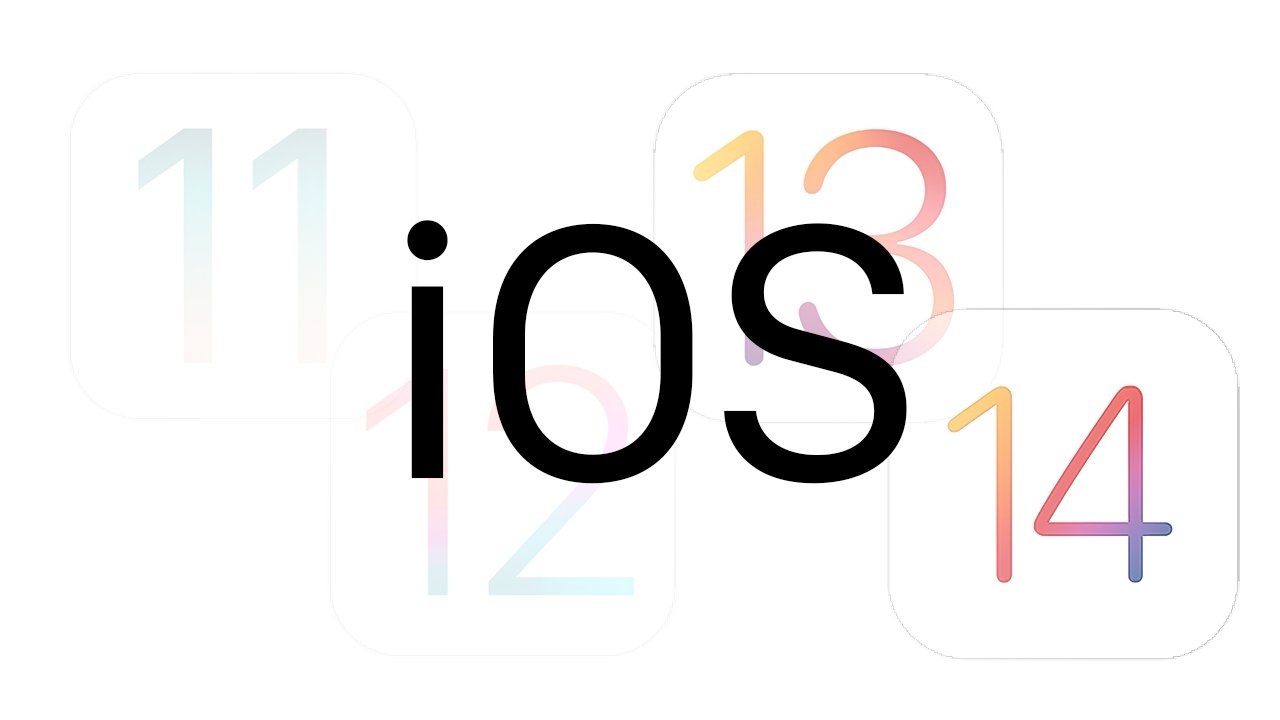

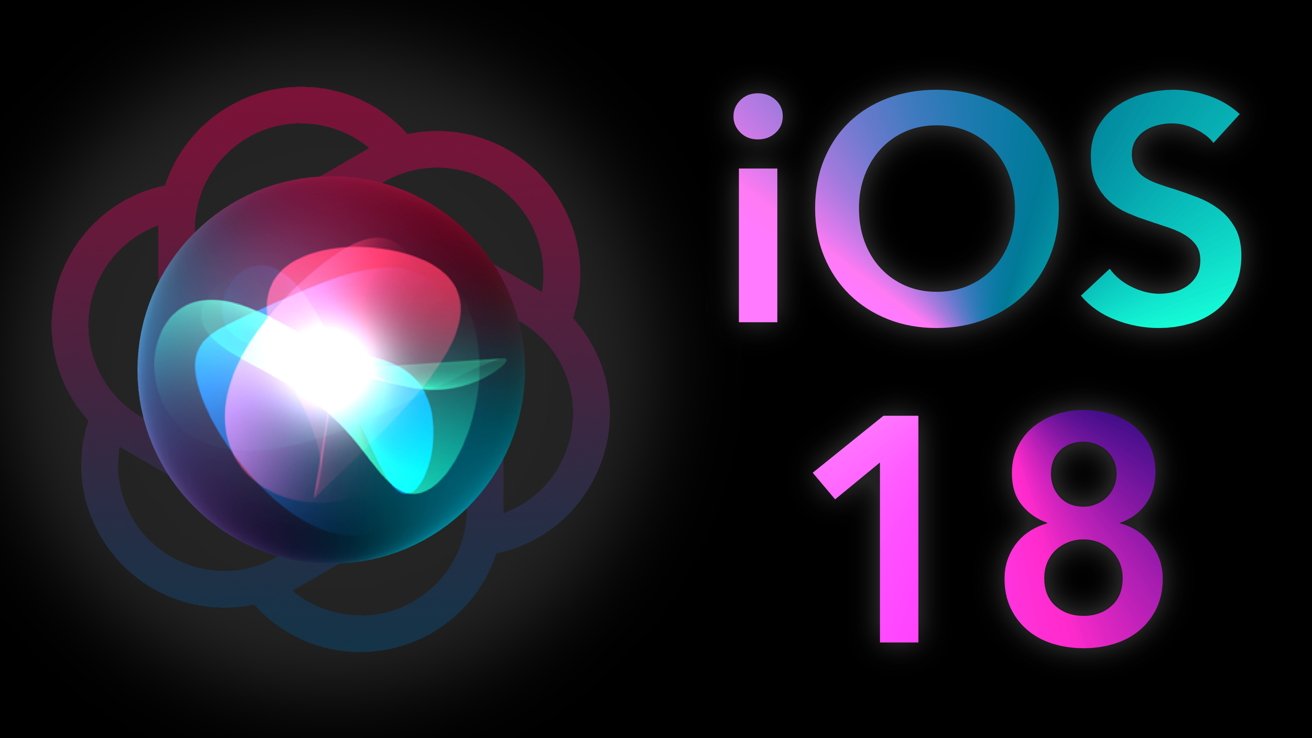
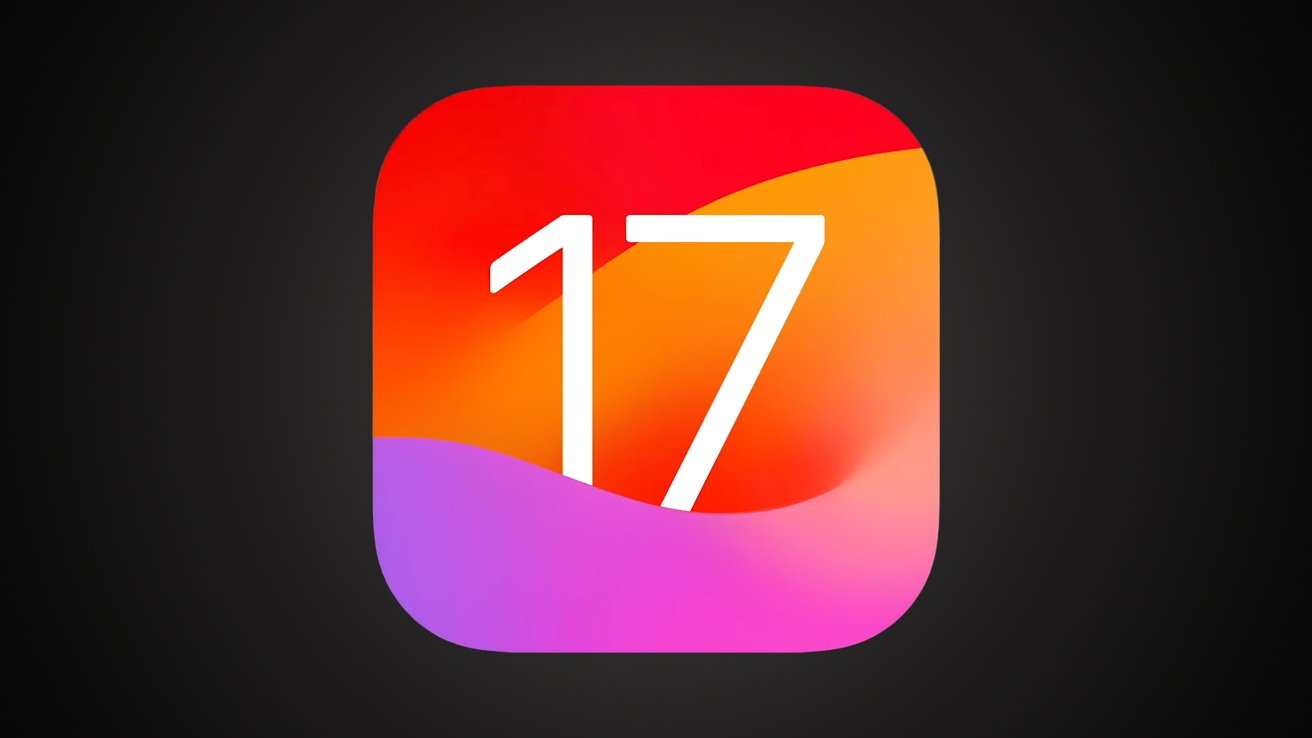



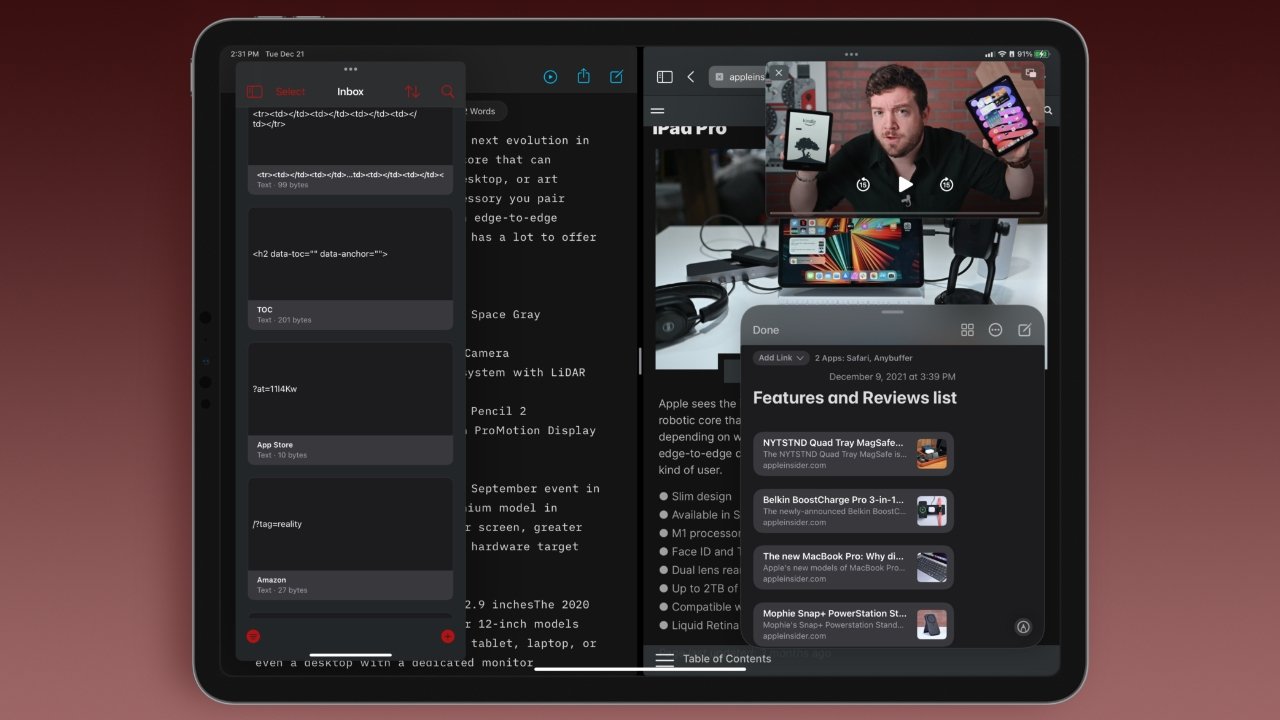
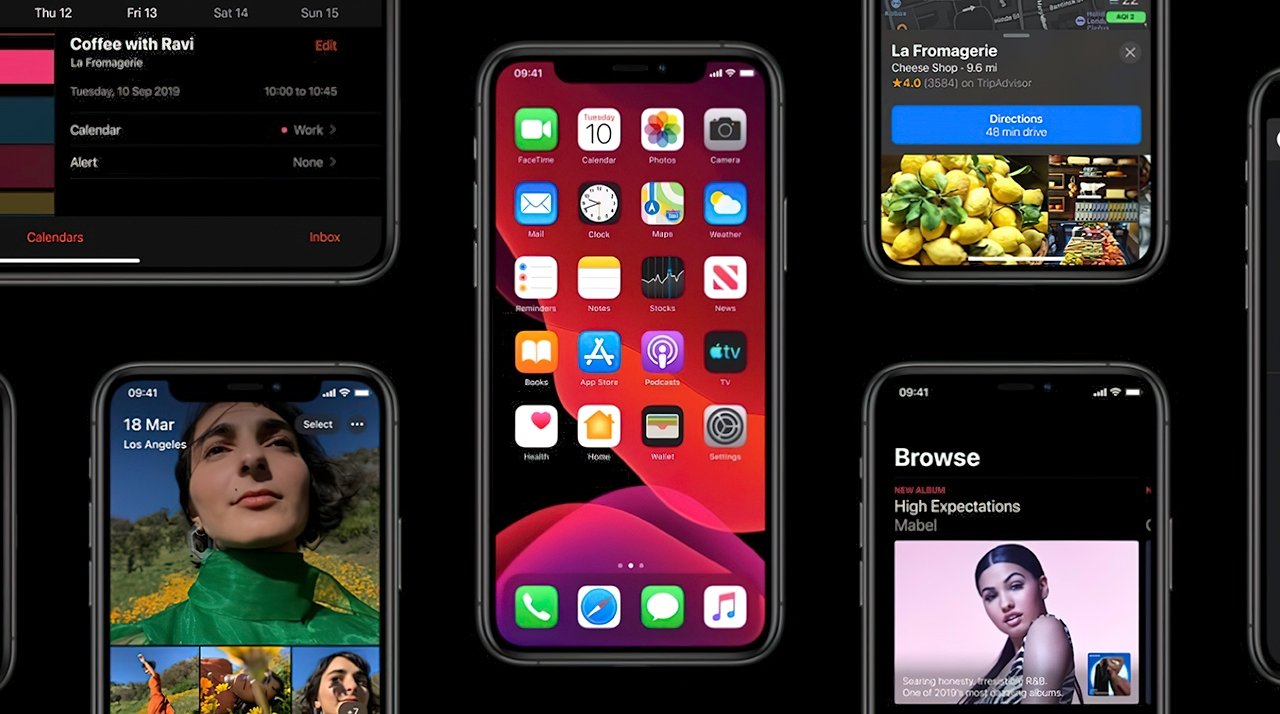
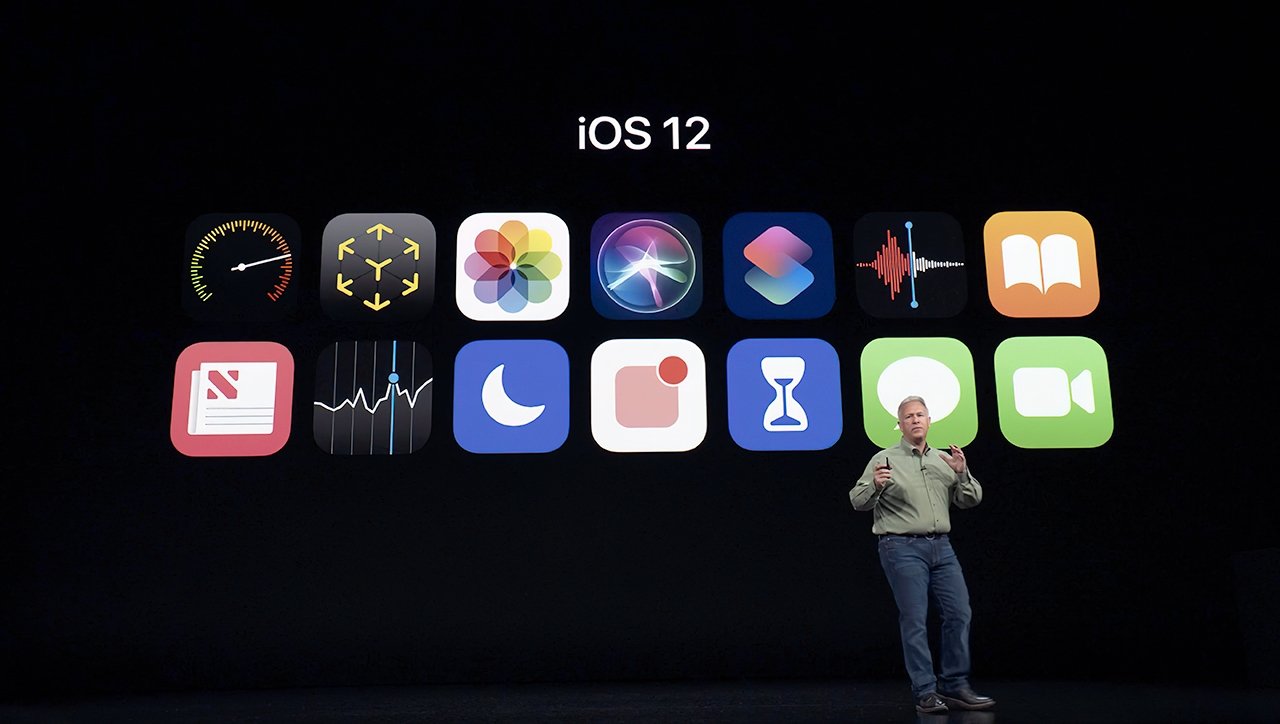
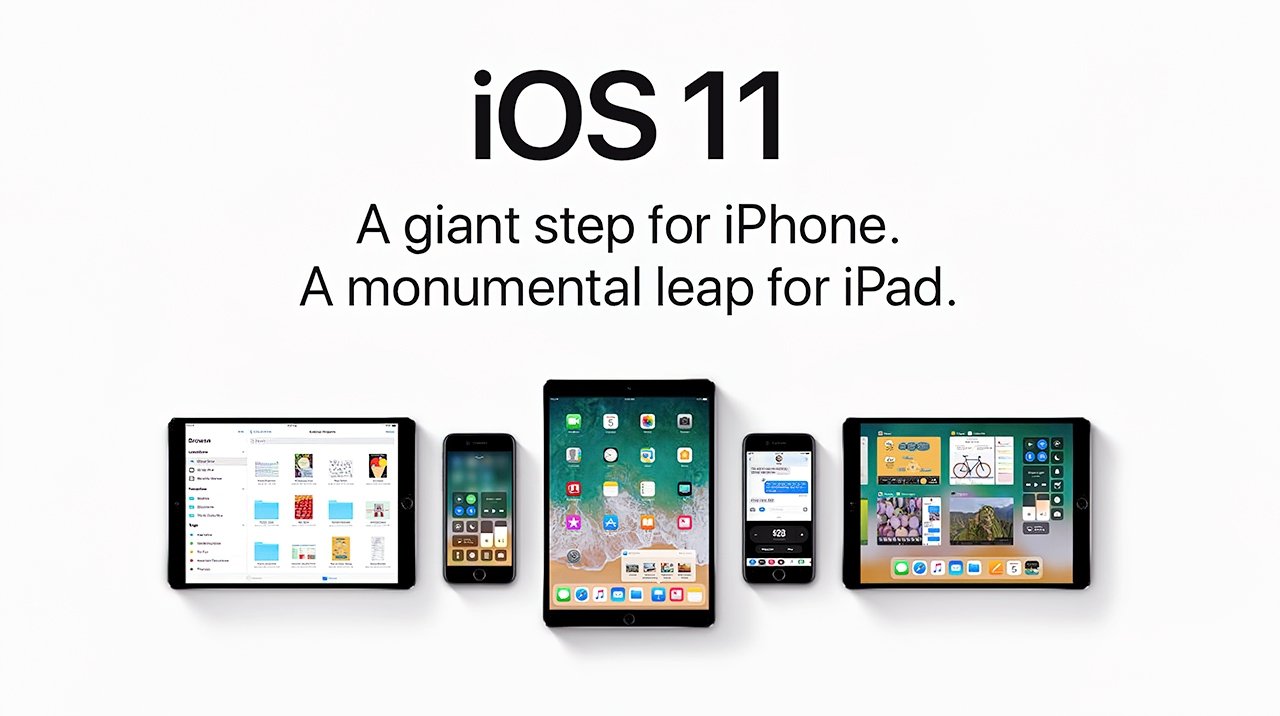
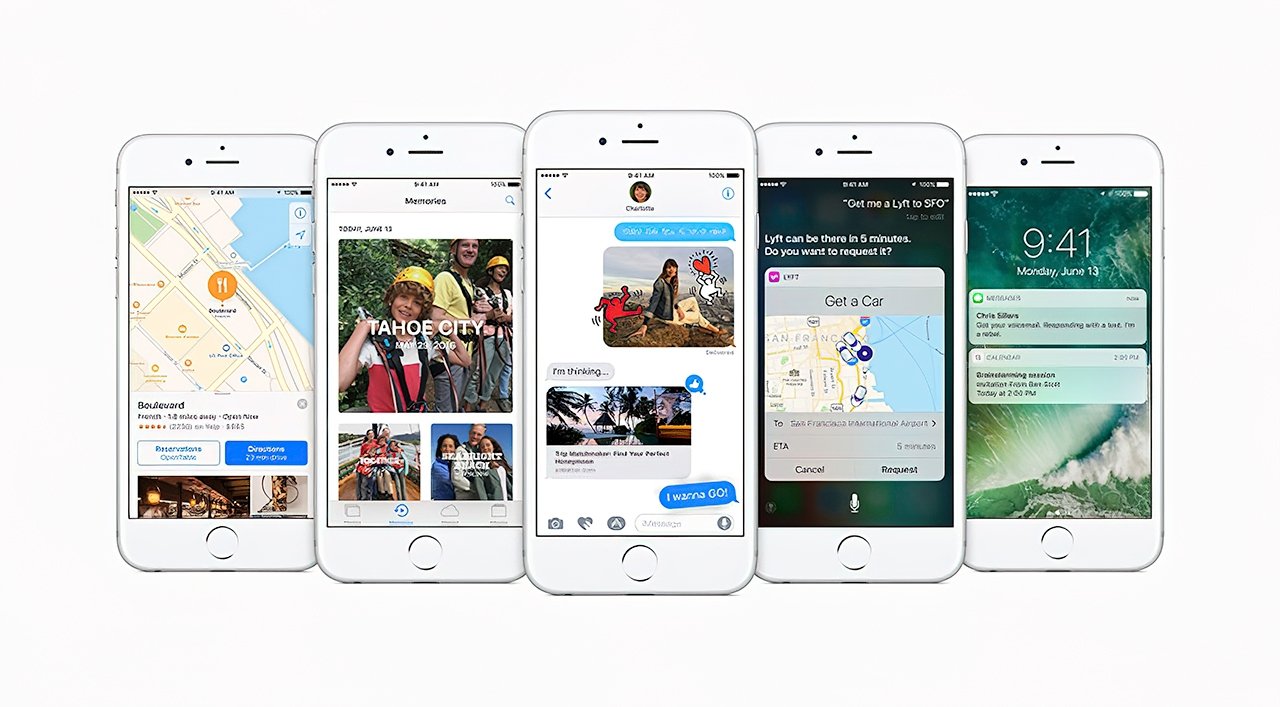
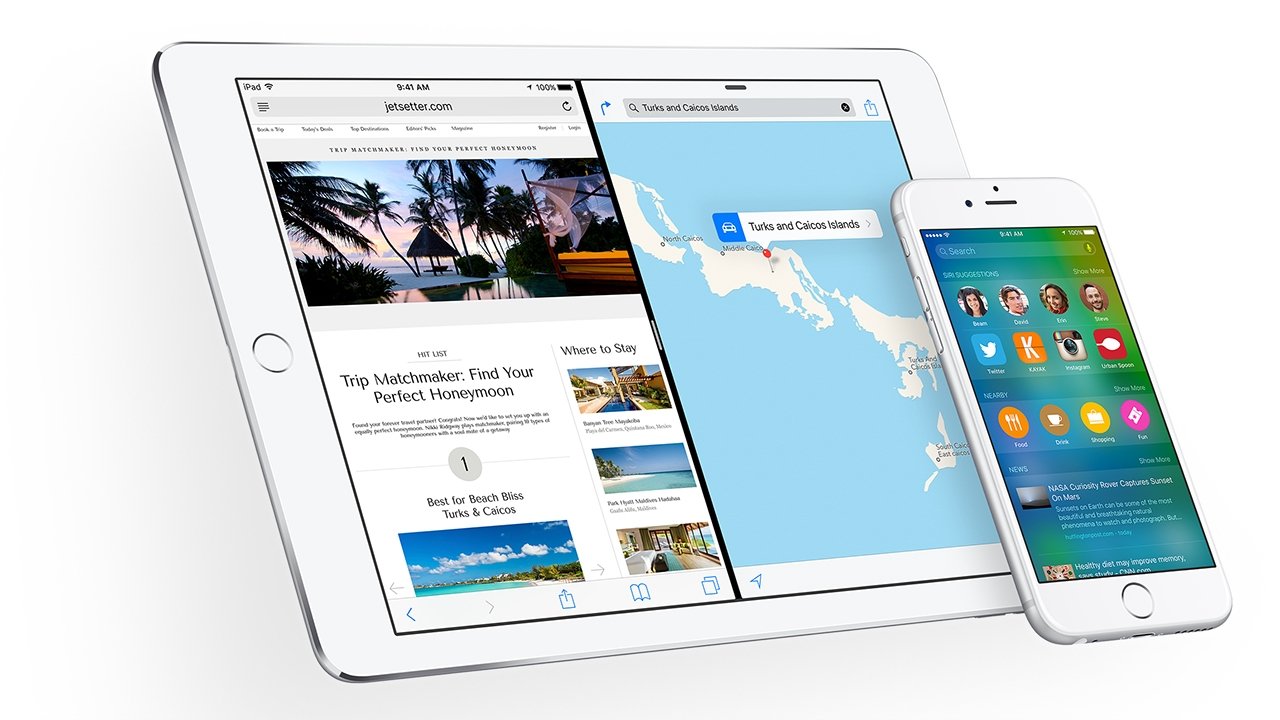
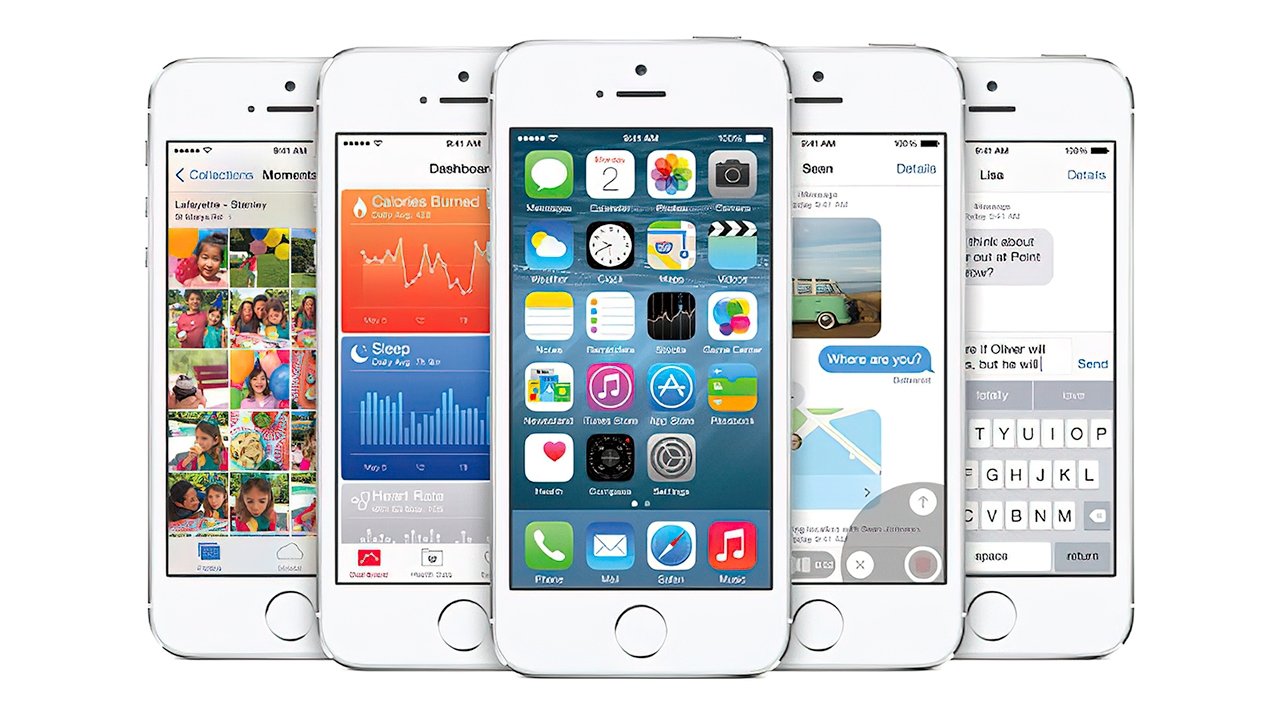
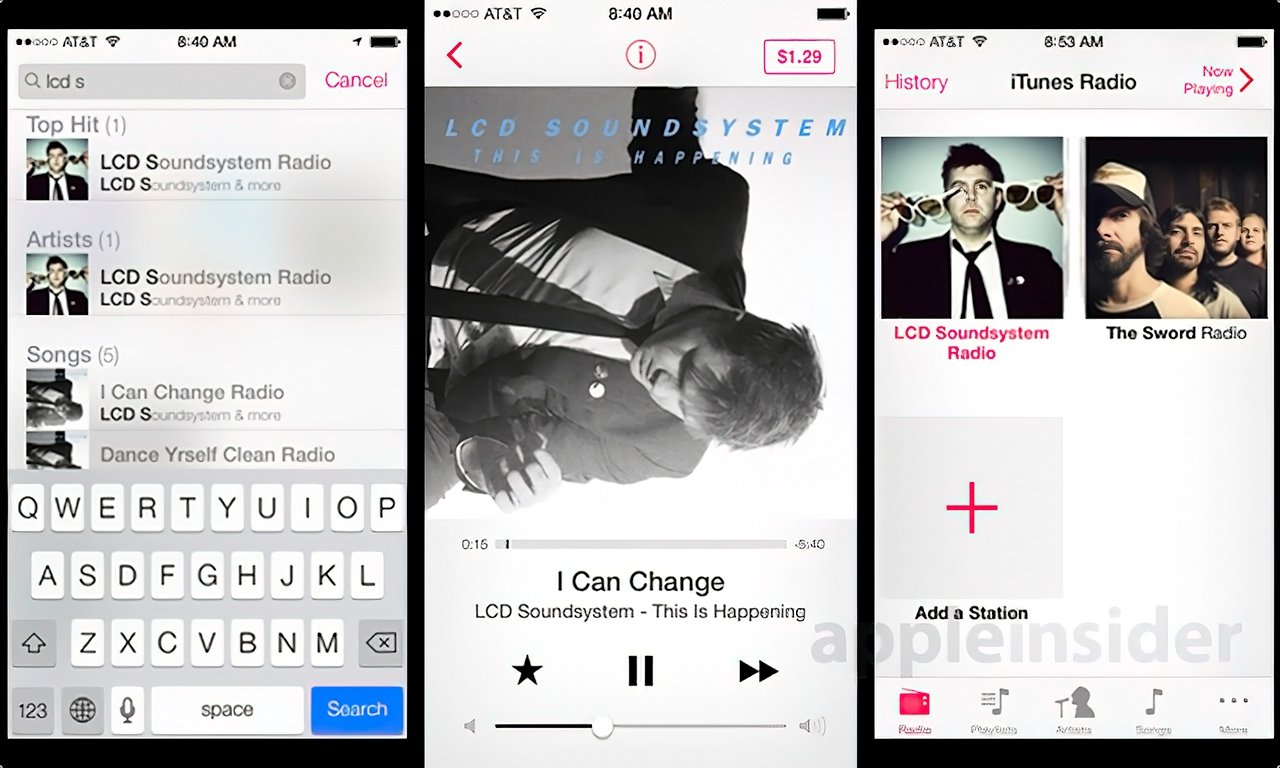


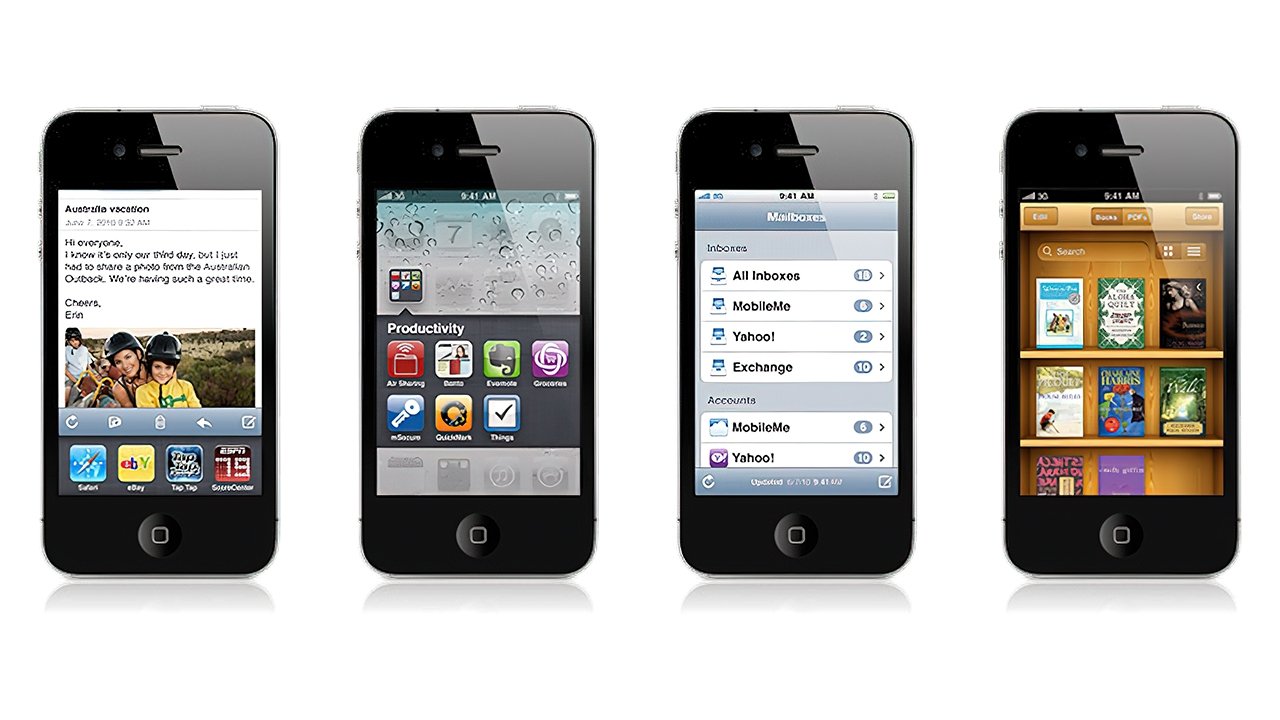
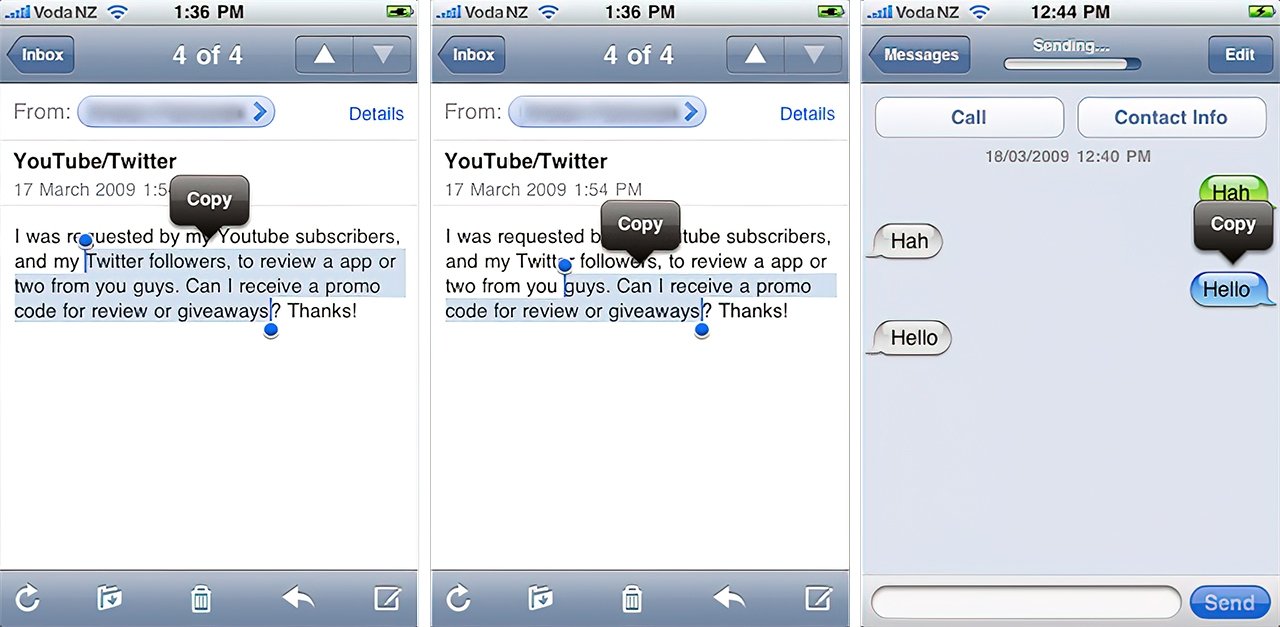

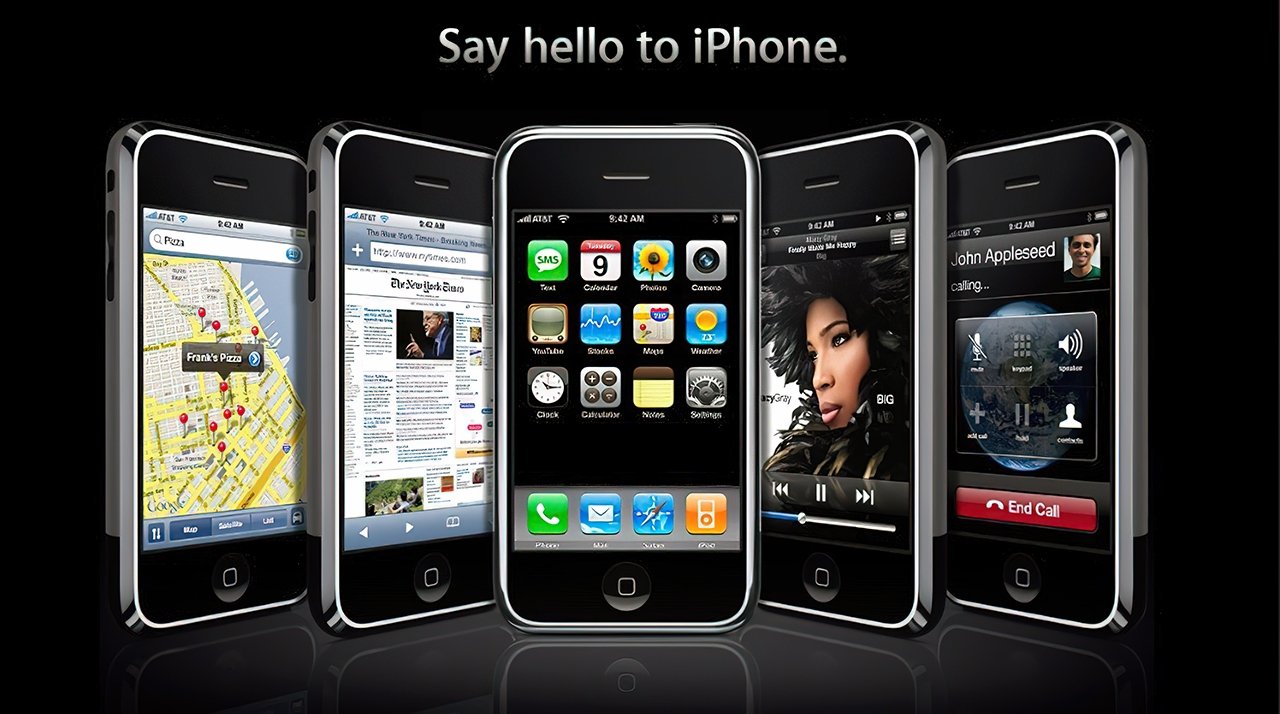
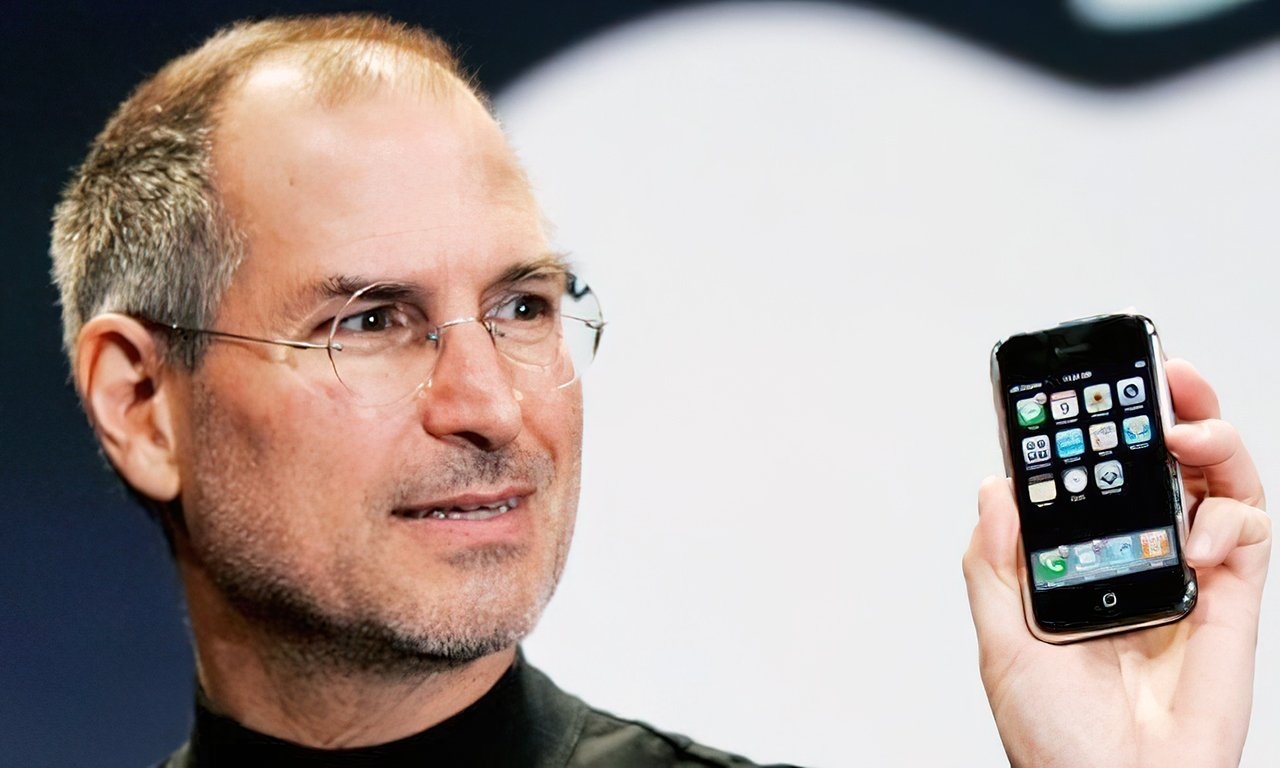
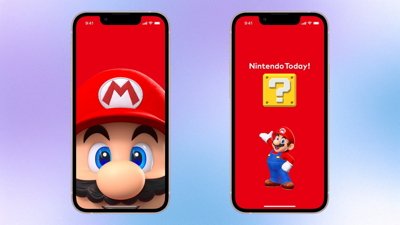
 Amber Neely
Amber Neely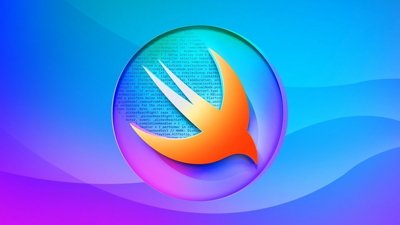
 Marko Zivkovic
Marko Zivkovic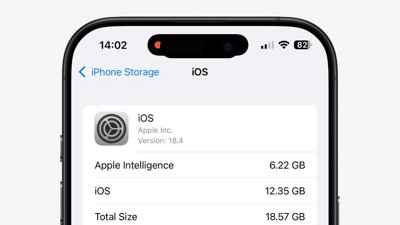
 William Gallagher
William Gallagher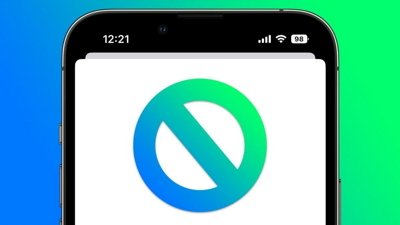

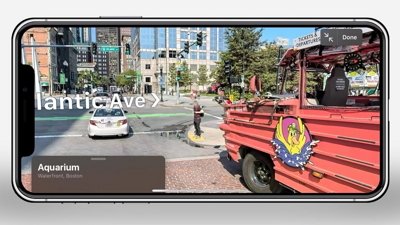
 Malcolm Owen
Malcolm Owen

 Wesley Hilliard
Wesley Hilliard